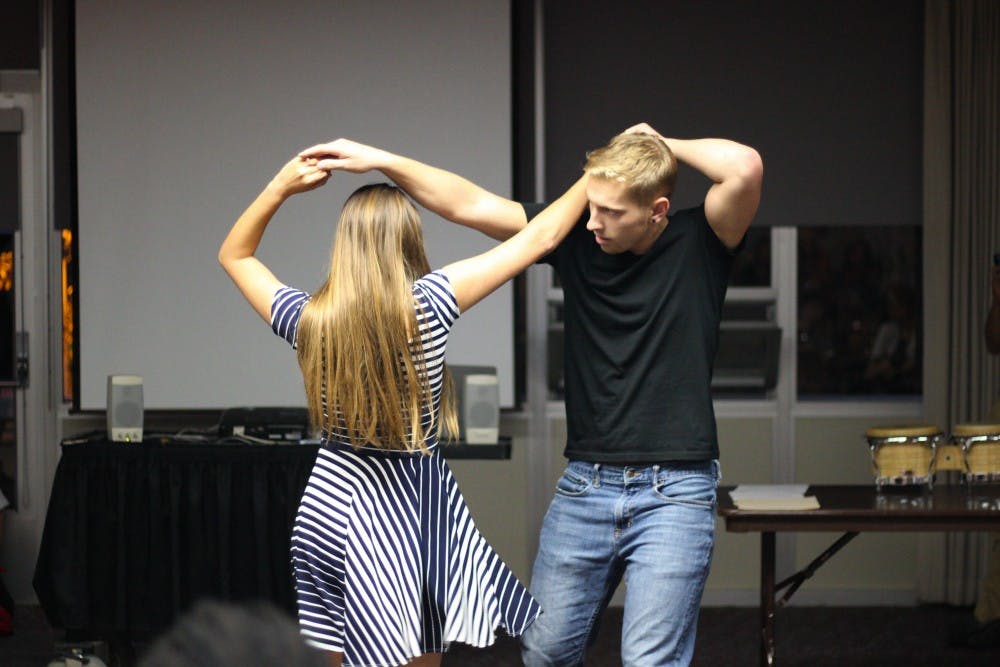Students learn about Latin American culture in dance workshop

Megan Valo, left, and Scott Schlagel, right, dances to a Caribbean Music dance called Merengue on Oct. 9 in the Bovee University Center Gold Room.
More than 60 people attended a Latin American dance and music workshop hosted by Sigma Delta Pi and music professor Jose-Luis Muartua Monday night in the Bovee University Center.
Sigma Delta Pi is the Central Michigan University chapter of the National Hispanic Honor Society. They hosted the event as part of Hispanic Heritage Month, which started Sept. 15 and runs until Oct. 15.
Muartua, a composition and theory professor, led the audience through a lesson of Latin American culture by explaining the history behind popular dances such as the zapateado from Mexico, the cumbia from Colombia and the bachata and merengue from the Dominican Republic.
The song used to demonstrate the zapateado was "El Son de la Negra," a song which has been popular in Mexico for centuries and is considered the second national anthem.
Ann Arbor junior Hannah Mauch performed the zapateado, wearing a traditional traje folklorico garment; a long, flowing skirt over a slip, tied together with a trenza folklorica, or headdress. She waved her long skirt around, using it as a prop while she danced using quick feet movements.
Mauch performed the El Jarabe Tapatio, a popular Mexican hat dance, for her Sigma Delta Pi initiation, and it inspired her to learn more about the dances. In January she began to watch Youtube videos and self-teach herself with tips from her Mexican-American godmother. She spent the summer perfecting the dance she performed for the audience.
“I really appreciate the opportunities Central gives us to promote our culture and promote the diversity we do have on campus,” Mauch said.
Members of Sigma Delta Pi demonstrated the merengue and the bachata, giving the audience a chance to join in and try it themselves. The crowded room made it difficult to move around, but the crowd laughed and followed along anyways.
The traditional dress for the merengue is warm, bright-colored skirts and loose flowing tops for women, with matching-colored shirts for men. A popular theory about the origin of the merengue is that slaves had to drag their feet to the beat of the drum, while chained together.
Muartua also used instruments in his demonstration such as the bongos and a guiro, a percussion instrument made from a hollow gourd.
A few of the audience members were multicultural advancement scholars, who are required to attend at least two different events dedicated to heritage months on campus.
Saginaw junior Michael Johnson and MAC scholar chose the event over others because he thought the interactive feature of it was unique.
“I thought it was a good opportunity to experience different cultures and broaden my horizons," Johnson said. "It’s something I haven’t experienced before.”
Grand Rapids freshman Emily Doucette, also a MAC scholar, wanted to learn more about the Latin American culture.
“I don’t think of myself as a great dancer, so I thought it was really interesting to learn what looks like would be complicated dances, by breaking it down and making it easier for everyone,” Doucette said.
Doucette said swing dancing is prominent in her hometown of Grand Rapids, and she could see how the dance moves she just learned could be incorporated into swing.



